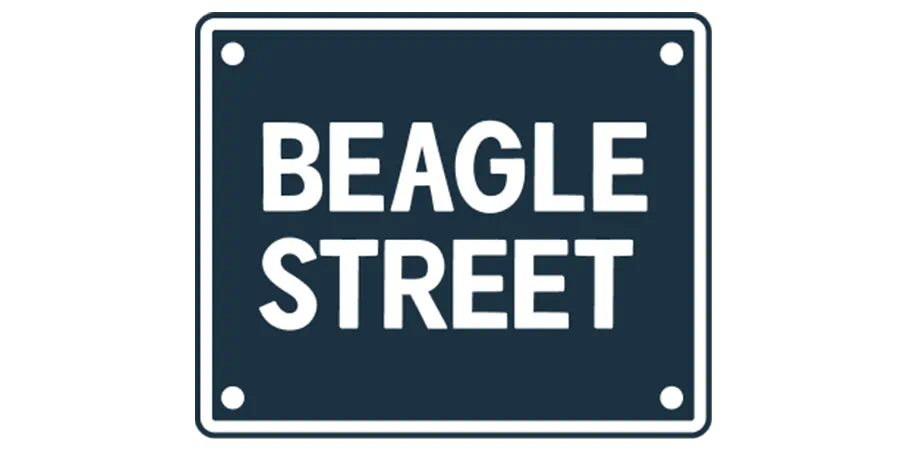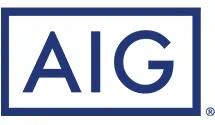How To: Finding Old Pensions in 2023
Have you ever wondered if there’s an old pension pot you’ve forgotten about? You’re not alone. With the increasing complexity of pension schemes and the tendency to change jobs more frequently, it’s easier than ever to lose track of your hard-earned retirement savings. But fear not, as this blog post will guide you through the process of finding old pensions, consolidating multiple pots, and keeping track of your retirement income in the future.
Key Takeaways
- Finding lost pensions is essential to maximise retirement income and benefits.
- Common reasons for losing track of pensions include job transitions, auto-enrolment, and outdated personal information.
- Utilising the Pension Tracing Service provided by Pensions Advice UK can help locate any lost pension pots as well as updating personal details regularly with providers and employers to stay informed about plans.
The Importance of Finding Lost Pensions

Uncovering lost pensions is vital for receiving your full retirement benefits while avoiding tax penalties or losses. It’s estimated that there are 1.6 million lost pension pots in the UK, with an approximate value of £37 billion. With such staggering numbers, it’s clear that tracing old pensions can have a significant impact on your retirement income.
Furthermore, a lost pension plan has the potential to increase in value over the years due to potential investment growth and compounding. This means that locating and claiming these pensions could substantially boost your retirement funds.
But what’s the best way to locate your lost pensions while maximising your retirement income?
Common Reasons for Losing Track of Pensions

Losing track of pensions is more common than you might think, with around one-fifth of individuals misplacing at least one pension pot. The primary causes of pension misplacement include auto-enrolment, job transitions, and outdated personal information. With the constantly changing landscape of employment and pension schemes, it’s no surprise that many people find it difficult to keep track of their retirement savings.
Understanding these common reasons for losing track of pensions can help you avoid making the same mistakes and ensure you have a more secure retirement. Next, we delve into how auto-enrolment and outdated personal details lead to pension misplacement, and offer solutions for tracing old pensions.
Auto-enrolment and its impact on pension tracking
Auto-enrolment has been a game-changer for workplace pension schemes, significantly increasing overall enrolment rates and ensuring more employees have easy access to a workplace pension scheme. However, this positive development comes with a downside: numerous individuals have lost track of their pension plans due to neglect and absent-mindedness.
As workers move between jobs and automatically enrol in multiple pension schemes, it becomes increasingly challenging to keep track of all these separate plans. The key to overcoming this challenge lies in proactive pension management and taking advantage of available resources, such as pension tracing services, to stay on top of your retirement savings.
The role of outdated personal details
Outdated contact details are another significant factor in losing track of pensions. When pension providers don’t have your current address, phone number, or email, they can’t keep you informed about your pension plans. This communication gap can leave you in the dark about your retirement savings and potentially lead to lost pension pots.
To prevent this, keeping your personal details current with your pension providers and former employers is vital. Not only will this help you stay informed about your pension plans, but it will also reduce the risk of fraud and ensure you receive the correct amount of pension income when you retire.
Utilising our Pension Tracing Service

The Pension Tracing Service is a valuable tool provided by Pensions Advice UK to help locate lost pensions using basic personal information. This free* service can assist you in identifying missing pensions, including workplace and personal pension schemes, even if you don’t have the contact details of the pension provider.
Utilising the Pension Tracing Service is your first step towards securing your full retirement income and not missing out on any valuable pension pots. In the next subsections, we will discuss how to use the Pension Tracing Service effectively and what information is needed for a successful pension search.
How to use our Pension Tracing Service
To use the Pension Tracing Service, follow these steps:
- Visit the lost pensions form here: https://pensionsadviceuk.com/free-pension-tracing-service/
- Enter as much pension contact details as you have.
- Input your basic personal details, such as full name, date of birth, and National Insurance number.
- We will connect you to the right Financial Adviser to help locate your lost workplace or personal pension scheme.
Once the adviser has the contact details for your pension’s administrator, they will contact them to ascertain if a pension exists with them, request its value, and any other details. By following these steps, you can successfully locate and claim any lost pensions, ensuring you receive your full retirement income.
What information is needed for a successful search
To successfully locate your pension, providing your National Insurance number and details of your previous employers is necessary. This information allows the Pension Tracing Service to match your details with the correct pension provider and help you locate any missing pensions.
Before utilising the Pension Tracing Service, it’s advisable to gather as much information as possible, including the name of the employer and any former names, the type of business, and the dates employed. By providing accurate and comprehensive information, you can increase the chances of locating your lost pensions and securing your financial future.
Contacting Previous Employers and Pension Providers

In addition to using the Pension Tracing Service, another effective way to locate lost pensions is by contacting your previous employers and pension providers directly. Communication with these entities can help you uncover any pension pots you may have forgotten about or lost track of over the years.
Reaching out to your previous employers and pension providers allows you to collect important information about your pension plans, like the type of pension scheme, your contributions, and your pension pot’s current value. Armed with this information, you can make informed decisions about your retirement savings and ensure you receive the full benefits you’re entitled to.
Tips for effective communication with previous employers
Maintaining a polite and respectful tone, listening attentively, and being clear about your objectives is crucial when contacting your previous employer for pension information. You should also be prepared to provide any necessary personal information, such as your full name, National Insurance number, and the dates you were employed by the company.
By maintaining effective communication with your previous employers, you can gather the information needed to locate any lost pensions and ensure you’re on track for a comfortable retirement. Don’t hesitate to ask questions or request additional information if needed, as this can help you gain a better understanding of your pension situation.
Identifying the right pension provider
Identifying the correct pension provider from your old paperwork is key when trying to locate a lost pension. Here are the steps to follow:
- Look for any documents that may contain the name of your employer or pension scheme, or details of the scheme’s administrator.
- Once you have this information, you can contact the pension provider directly.
- Provide your personal information, including your name, address, previous names or addresses, and National Insurance number.
By communicating with the right pension provider, you can obtain accurate information about your pension plan, including its current value and any benefits associated with it. This will help you make informed decisions about your retirement savings and ensure you receive the full pension income you’re entitled to.
Additional Resources for Finding Old Pensions

Apart from the Pension Tracing Service and direct communication with previous employers and pension providers, there are additional resources that can help you locate old pensions. One such resource is the Companies House website, which can be utilised to seek employer information for pension tracing. By using this website, you can access valuable information about your previous employers, making it easier to track down any missing pensions and secure your retirement income.
Using Companies House website for employer information
To use the Companies House website for employer information, simply visit their official website and search for the company in question. By accessing the company’s records, you can gather important information about the company’s history, financial standing, and any changes to its name or structure.
This can help you locate the correct pension provider or administrator, paving the way for a successful pension search and ensuring you don’t miss out on any valuable retirement income.
Consolidating Multiple Pension Pots

A beneficial strategy for simplifying your retirement savings management and potentially reducing fees is consolidating multiple pension pots. By amalgamating eligible pension pots into a single entity, you can streamline your pension administration and make it easier to monitor and manage your retirement income.
However, before consolidating your pensions, it’s essential to consider various factors, such as the valuable benefits and exit charges associated with each pension plan. In the following subsections, we’ll explore the factors to consider before consolidating pensions and the importance of seeking financial advice for pension transfers.
Factors to consider before consolidating pensions
Weighing the pros and cons of each pension plan is crucial when considering pension consolidation. Valuable benefits, such as guaranteed annuity rates or defined benefit schemes, may be lost upon consolidation. Additionally, exit charges may apply when transferring pension pots, which could offset any potential savings from consolidation.
By carefully assessing these factors, you can make an informed decision about whether pension consolidation is the right choice for you. It’s essential to ensure that any pension transfers are in your best interest and will ultimately result in a more secure and comfortable retirement.
Seeking financial advice for pension transfers
Seeking financial advice before transferring pensions is a must to guarantee the best outcome. Financial advisors can help you:
- Make informed choices
- Optimise your retirement benefits
- Navigate the complex process
- Protect your interests
In fact, obtaining financial advice for pension transfers is legally required for pensions with a transfer value of £30,000 or more.
To locate a reliable financial advisor, you can complete one of our contact forms and we can connect you to a Financial Adviser that suits your needs.
By seeking professional guidance, you can ensure that your pension transfers result in a more secure and prosperous retirement.
Keeping Track of Pensions in the Future

Regularly updating your personal details with your pension providers and former employers is essential to avoid losing track of your pensions in the future. This will help ensure that you receive timely and accurate information about your pension plans and minimise the risk of fraud or incorrect pension payments.
Keeping your pension paperwork organised is also key to stay on top of your retirement savings. In the following subsections, we’ll offer tips for updating your personal details regularly and staying organised with pension paperwork.
Updating personal details regularly
Keeping your personal details up-to-date is crucial for maintaining accurate pension records and ensuring you receive the correct pension income. Make it a habit to update your address, contact details, and bank account information with your pension providers and former employers whenever there’s a change. By doing so, you can stay informed about your pension plans, reduce the risk of fraud, and ensure that your pension providers can easily contact you when necessary.
Staying organised with pension paperwork
To stay organised with your pension paperwork, store all pension-related documents in a single, secure location, such as a folder or filing cabinet. Monitor any changes to your pension, including contribution amounts or provider changes, and update your records accordingly.
By keeping your pension paperwork organised and easily accessible, you can ensure that you have all the information you need to make informed decisions about your retirement savings and avoid losing track of your pension pots.
Summary
In conclusion, finding old pensions and keeping track of your retirement savings is crucial for securing a comfortable retirement. By utilising resources like our Pension Tracing Service, contacting previous employers and pension providers, and staying organised with your personal details and pension paperwork, you can ensure that you receive the full pension income you’re entitled to. Don’t let lost pensions slip through the cracks; take control of your retirement savings and secure a brighter financial future.
Frequently Asked Questions
Can I find old pensions using my NI number?
Yes, you can find old pensions using your National Insurance (NI) number. Once you’ve located an old employer or pension provider, you can get in touch with them directly to request any pension records they may have.
How do I find out if my pension has lost money?
Use our Pension Tracing Service or your pension provider to determine if your pension has lost money. The Pension Tracing Service is a free* service and pension providers are available to help you out.
What happens to all my old pensions?
You can transfer your old workplace pensions into a new scheme, allowing you to combine them into one and take control of how the money is invested. However, withdrawal may not be possible right away.
Can I view my pensions?
You can view the value of your pensions by contacting your pension providers or former employers, or using our Pension Tracing Service. Alternatively, you may receive an annual benefit statement from your pension provider. This will show how much pension you could expect to receive, assuming you take the tax-free cash lump sum.
What should I do if I find a lost pension?
If you have found a lost pension, contact the pension provider or administrator as soon as possible and request information on the pension’s value and how to access it.
About Pensions Advice UK
At Pensions Advice UK, we provide you with an easy route to a specialist financial adviser, no matter what your requirements are. All our chosen advisers are experienced and able to give you qualified advice. Get started here.












